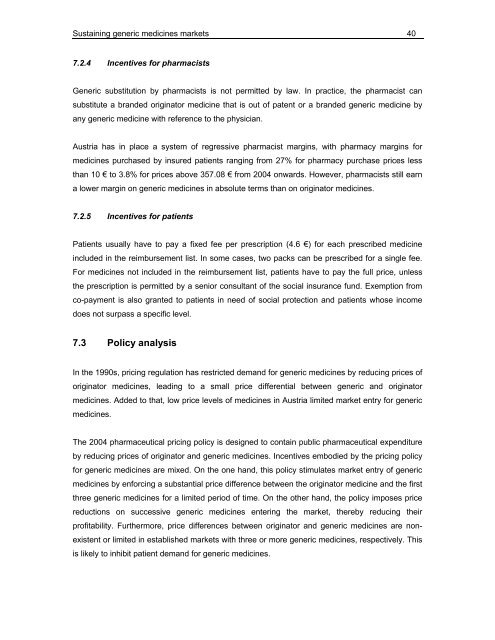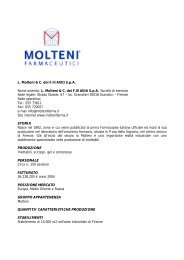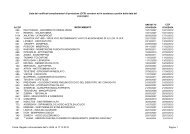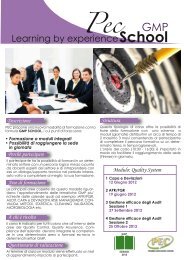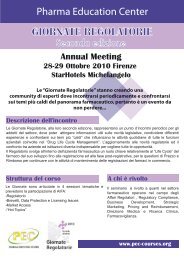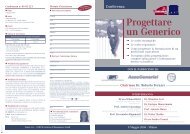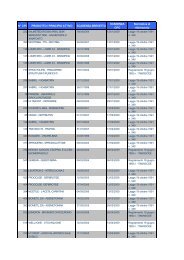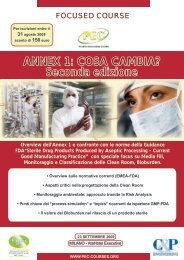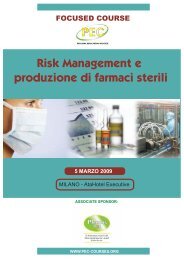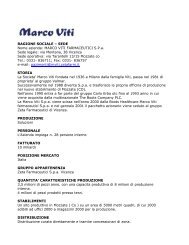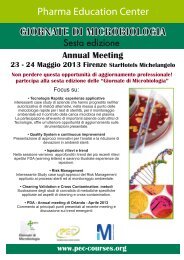Sustaining Generic Medicines Markets in Europe
Sustaining Generic Medicines Markets in Europe
Sustaining Generic Medicines Markets in Europe
Create successful ePaper yourself
Turn your PDF publications into a flip-book with our unique Google optimized e-Paper software.
<strong>Susta<strong>in</strong><strong>in</strong>g</strong> generic medic<strong>in</strong>es markets 407.2.4 Incentives for pharmacists<strong>Generic</strong> substitution by pharmacists is not permitted by law. In practice, the pharmacist cansubstitute a branded orig<strong>in</strong>ator medic<strong>in</strong>e that is out of patent or a branded generic medic<strong>in</strong>e byany generic medic<strong>in</strong>e with reference to the physician.Austria has <strong>in</strong> place a system of regressive pharmacist marg<strong>in</strong>s, with pharmacy marg<strong>in</strong>s formedic<strong>in</strong>es purchased by <strong>in</strong>sured patients rang<strong>in</strong>g from 27% for pharmacy purchase prices lessthan 10 € to 3.8% for prices above 357.08 € from 2004 onwards. However, pharmacists still earna lower marg<strong>in</strong> on generic medic<strong>in</strong>es <strong>in</strong> absolute terms than on orig<strong>in</strong>ator medic<strong>in</strong>es.7.2.5 Incentives for patientsPatients usually have to pay a fixed fee per prescription (4.6 €) for each prescribed medic<strong>in</strong>e<strong>in</strong>cluded <strong>in</strong> the reimbursement list. In some cases, two packs can be prescribed for a s<strong>in</strong>gle fee.For medic<strong>in</strong>es not <strong>in</strong>cluded <strong>in</strong> the reimbursement list, patients have to pay the full price, unlessthe prescription is permitted by a senior consultant of the social <strong>in</strong>surance fund. Exemption fromco-payment is also granted to patients <strong>in</strong> need of social protection and patients whose <strong>in</strong>comedoes not surpass a specific level.7.3 Policy analysisIn the 1990s, pric<strong>in</strong>g regulation has restricted demand for generic medic<strong>in</strong>es by reduc<strong>in</strong>g prices oforig<strong>in</strong>ator medic<strong>in</strong>es, lead<strong>in</strong>g to a small price differential between generic and orig<strong>in</strong>atormedic<strong>in</strong>es. Added to that, low price levels of medic<strong>in</strong>es <strong>in</strong> Austria limited market entry for genericmedic<strong>in</strong>es.The 2004 pharmaceutical pric<strong>in</strong>g policy is designed to conta<strong>in</strong> public pharmaceutical expenditureby reduc<strong>in</strong>g prices of orig<strong>in</strong>ator and generic medic<strong>in</strong>es. Incentives embodied by the pric<strong>in</strong>g policyfor generic medic<strong>in</strong>es are mixed. On the one hand, this policy stimulates market entry of genericmedic<strong>in</strong>es by enforc<strong>in</strong>g a substantial price difference between the orig<strong>in</strong>ator medic<strong>in</strong>e and the firstthree generic medic<strong>in</strong>es for a limited period of time. On the other hand, the policy imposes pricereductions on successive generic medic<strong>in</strong>es enter<strong>in</strong>g the market, thereby reduc<strong>in</strong>g theirprofitability. Furthermore, price differences between orig<strong>in</strong>ator and generic medic<strong>in</strong>es are nonexistentor limited <strong>in</strong> established markets with three or more generic medic<strong>in</strong>es, respectively. Thisis likely to <strong>in</strong>hibit patient demand for generic medic<strong>in</strong>es.


